
This week we had the pleasure of hosting several team members from Big Life Foundation without whom our lodge would not be a possibility. One of the first community-owned wildlife areas in Kenya, Kimana Sanctuary is truly a special place and Big Life's work here not only supports the wildlife but also our neighbouring communities. You can read more about our partnership here.

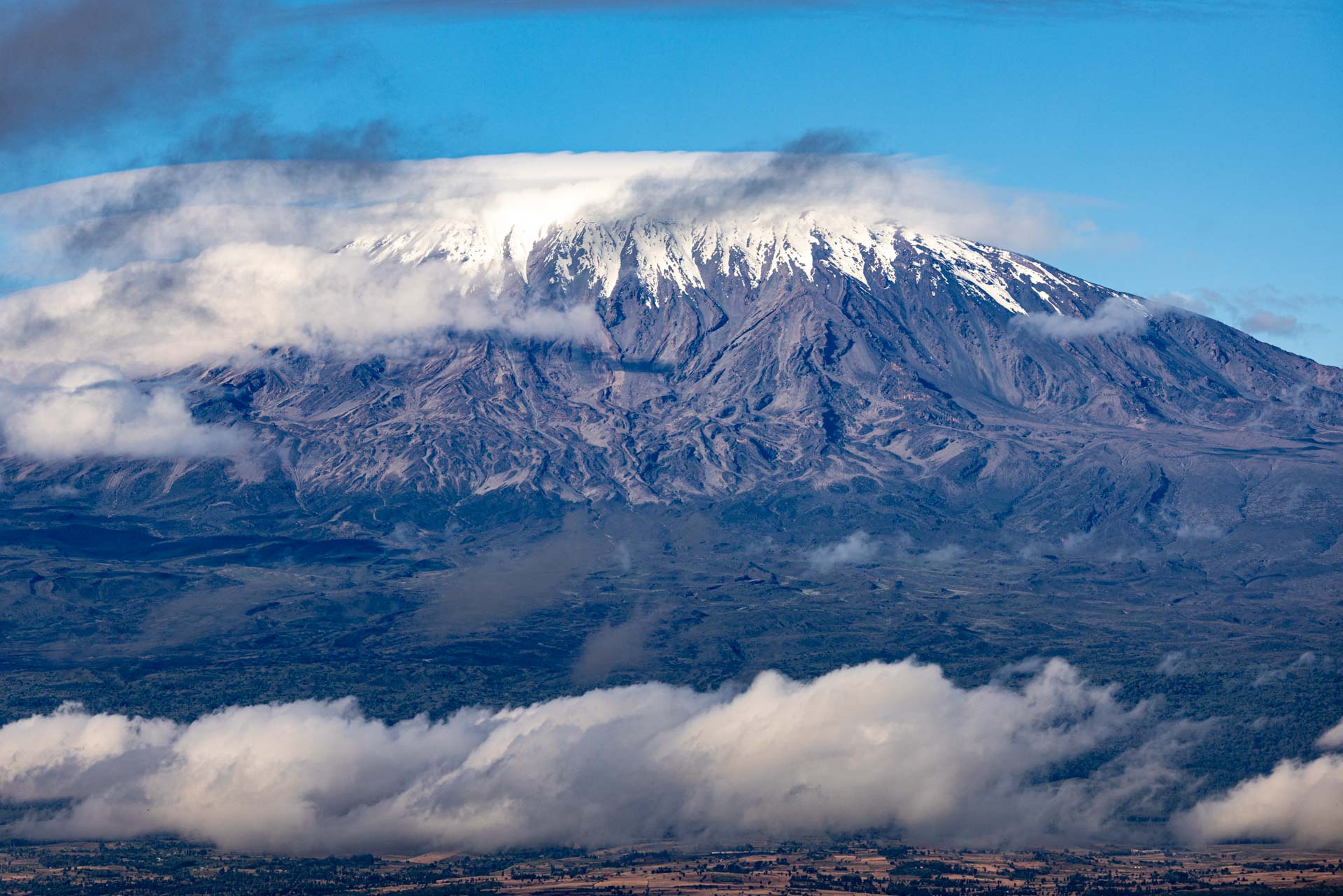
One of the most exciting sightings this week was two male lions spotted in a place recently called 'Simba House'. These two unrelated males have formed a coalition and have been seen in the area a few times now. They are easily identifiable because one is collared and the other has a darker mane with black hair. The names given to these lions by the Lion Guardians (an organisation that protects lions in the area), are Osunash and Male 263. When comparing them to lions found in the Mara, I was surprised by how shy Male 263 was. It seems he is not used to vehicles and the process of habituation can take time before he is fully comfortable in the presence of cars.
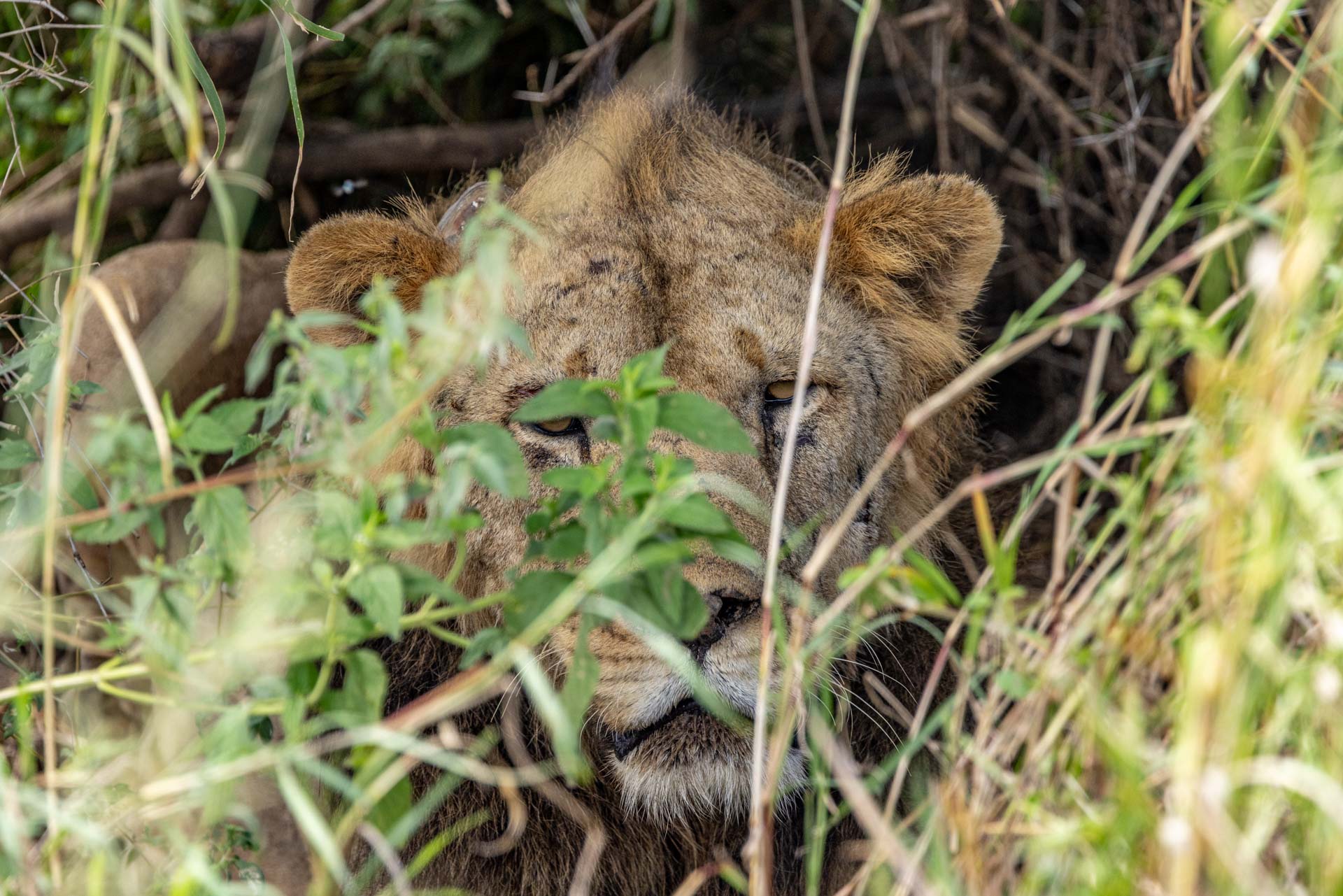

An animal I had only ever seen in books was found this week in the Sanctuary. As we were driving, we noticed something in the bushes behind us — a shy and beautiful lesser kudu. Mostly active at night, their impressive spiral horns twist about two and a half times and can reach up to four feet long. Females lack horns and can be found in groups of up to ten with their young. Judging by the presence and size of these horns, this looks to be a young male, spotted not far from the camp.
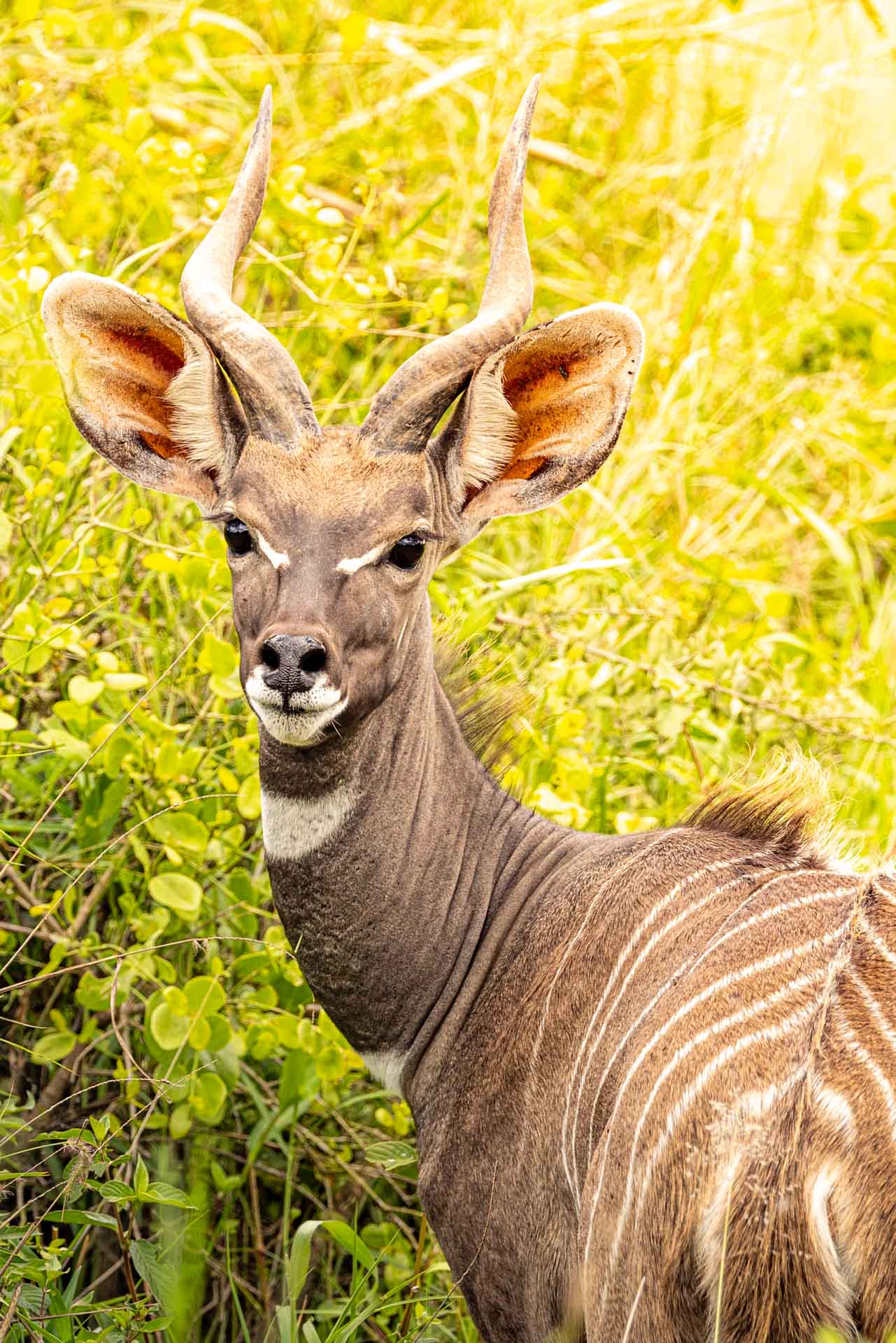
Another creature more active at night is the Verreaux’s eagle owl. We came across one perched in a tree looking down at our vehicle. These fascinating creatures are the largest owl in Africa and can reach over two feet long with a wingspan three times that. The most distinguishing feature of this animal is its stark black eyes below brightly pink eyelids. They have keen eyesight that allows them to spot prey in the dark and they can fly silently in their pursuit.

The little bee-eater can be seen all over the Sanctuary. This brilliantly coloured bird preys on flying insects as seen in this picture. They are skilled aerial hunters who use a variety of techniques and flight agility to anticipate the movement of flying insects and catch their prey. They have a distinct blue mask and their body has a beautiful mixture of cinnamon and pale green.
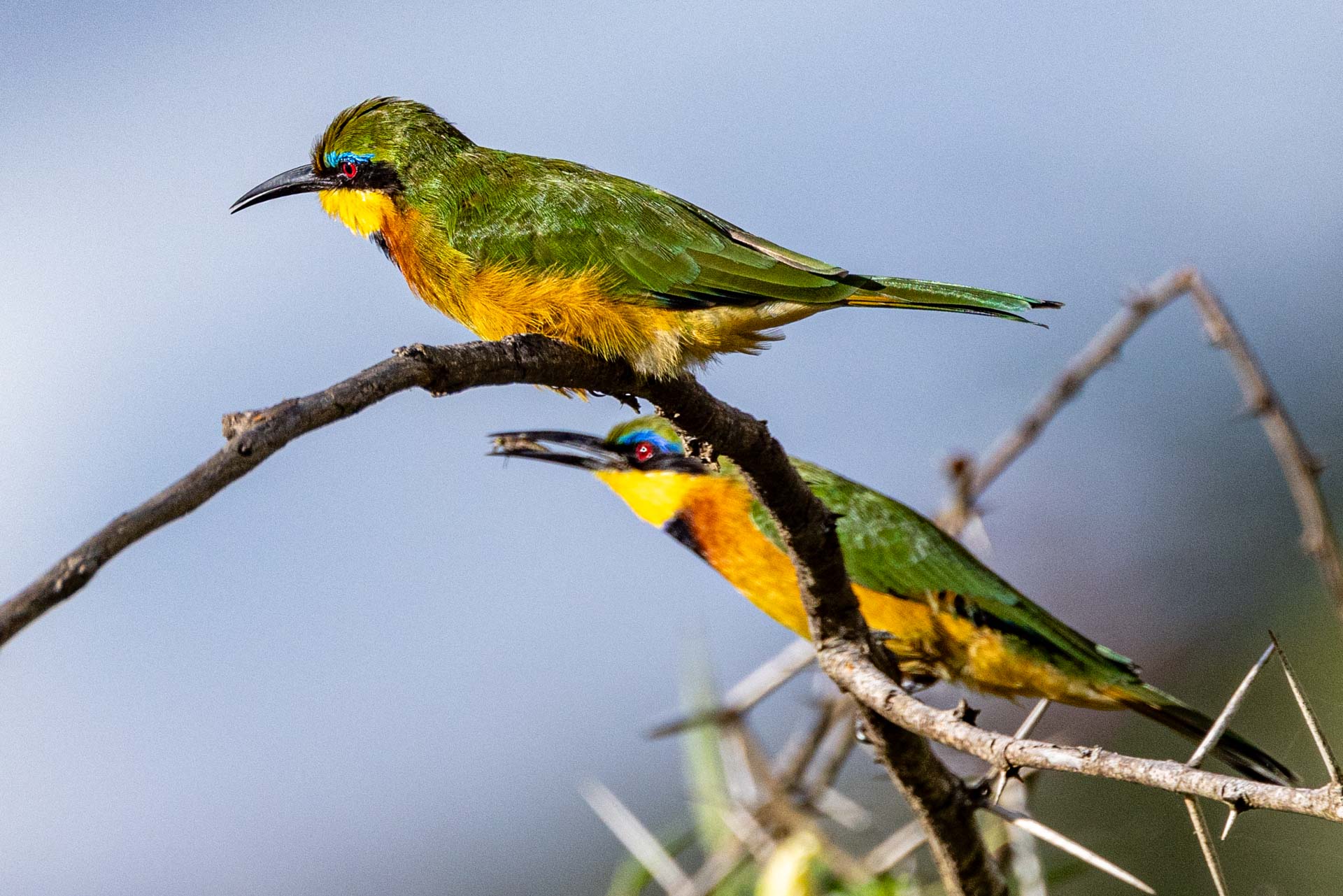
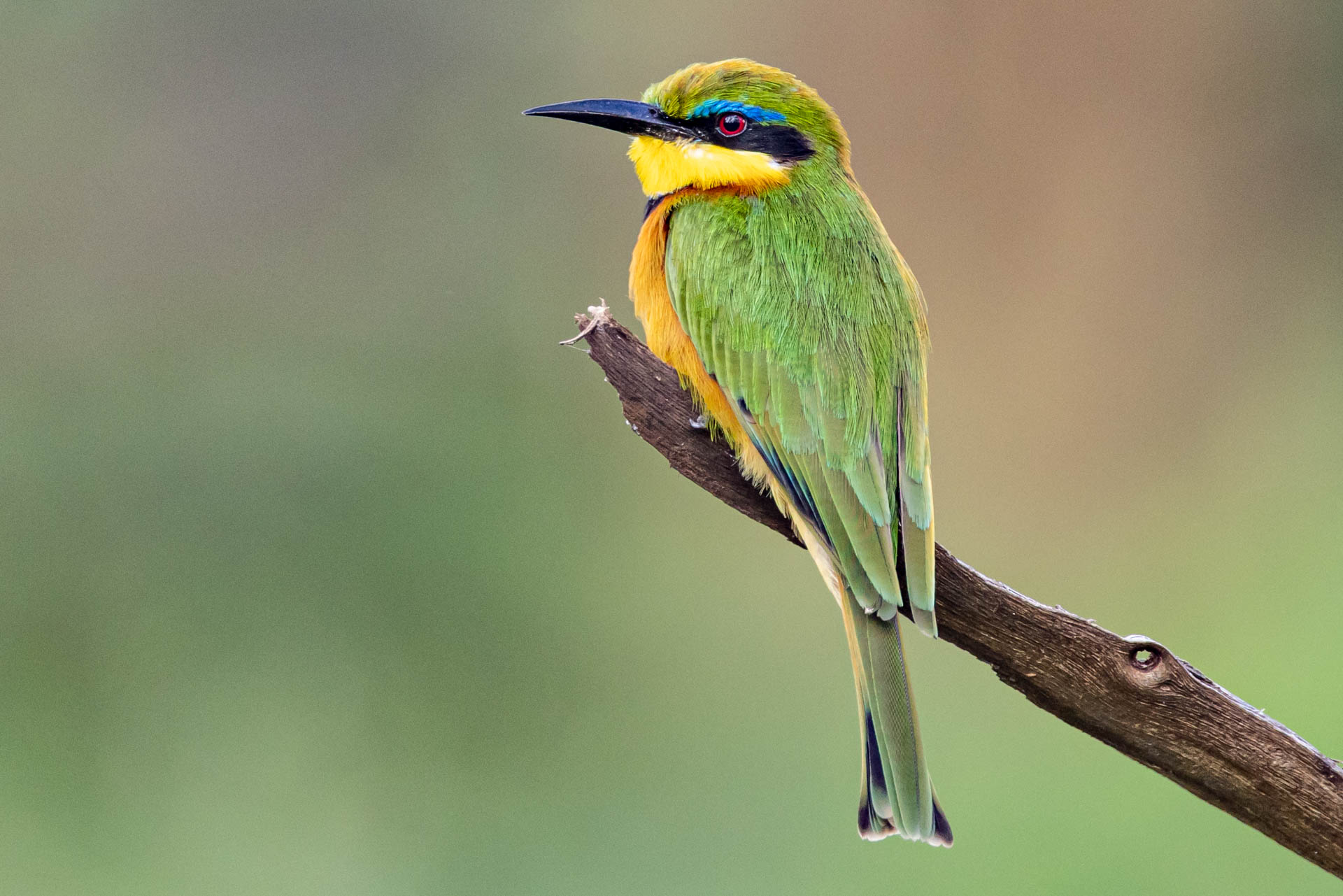
Yellow baboons are common in Kimana Sanctuary and hundreds of them move in troops with a dominance hierarchy. Certain individuals are considered to take roles of leadership and can be seen directing or protecting the whole troop. High on a branch, I watched this large male for some time, as he carefully looked from right to left, noticeably looking out for the rest of the members of the troop that slowly moved down below.
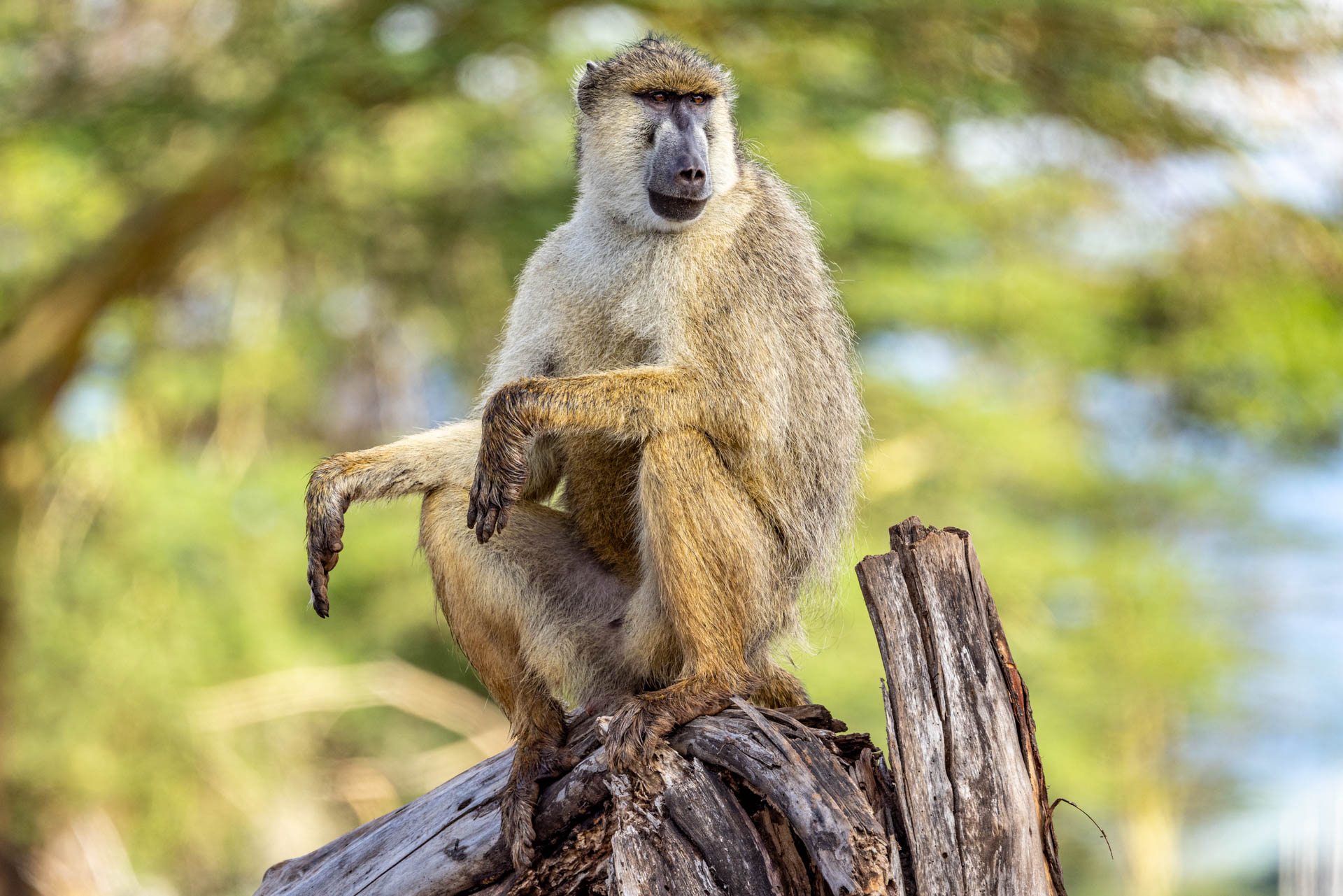
The design of Mnara allows for a sundowner location like none other. One evening, within metres from the tower, two large herds of elephants with a few Super Tuskers silently walked through the vivid green bushes. We watched as the two separate families of elephants only momentarily crossed paths but then went their separate ways. Salaash, a former Big Life ranger, now Angama Guide, began to explain to me how he could tell it was separate families: some of the elephants had bright red soil on their skin and others were all grey. One group had clearly spent time outside the Sanctuary in a place where the soil is richer in iron, turning it a vivid red colour. -Andrew Andrawes

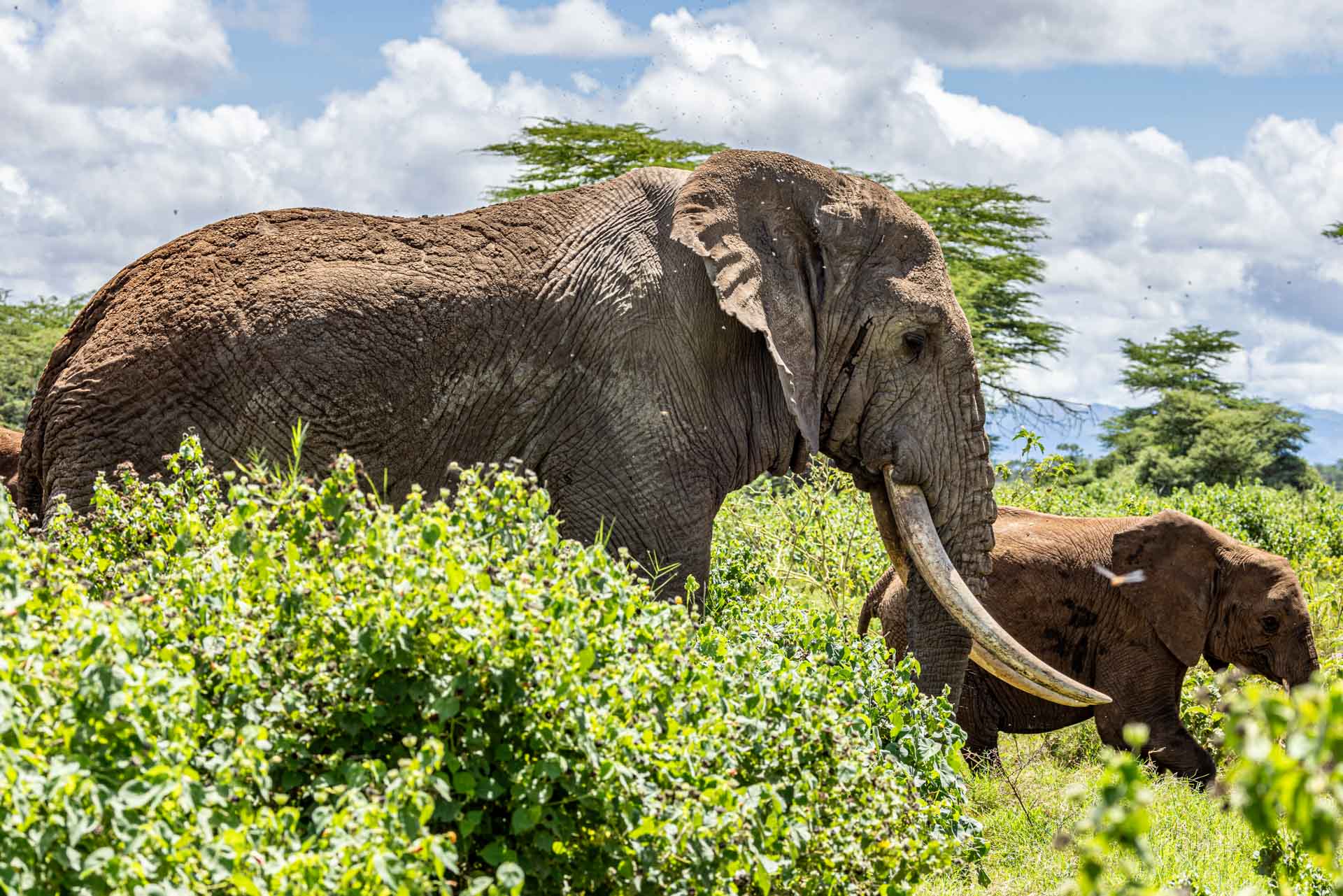
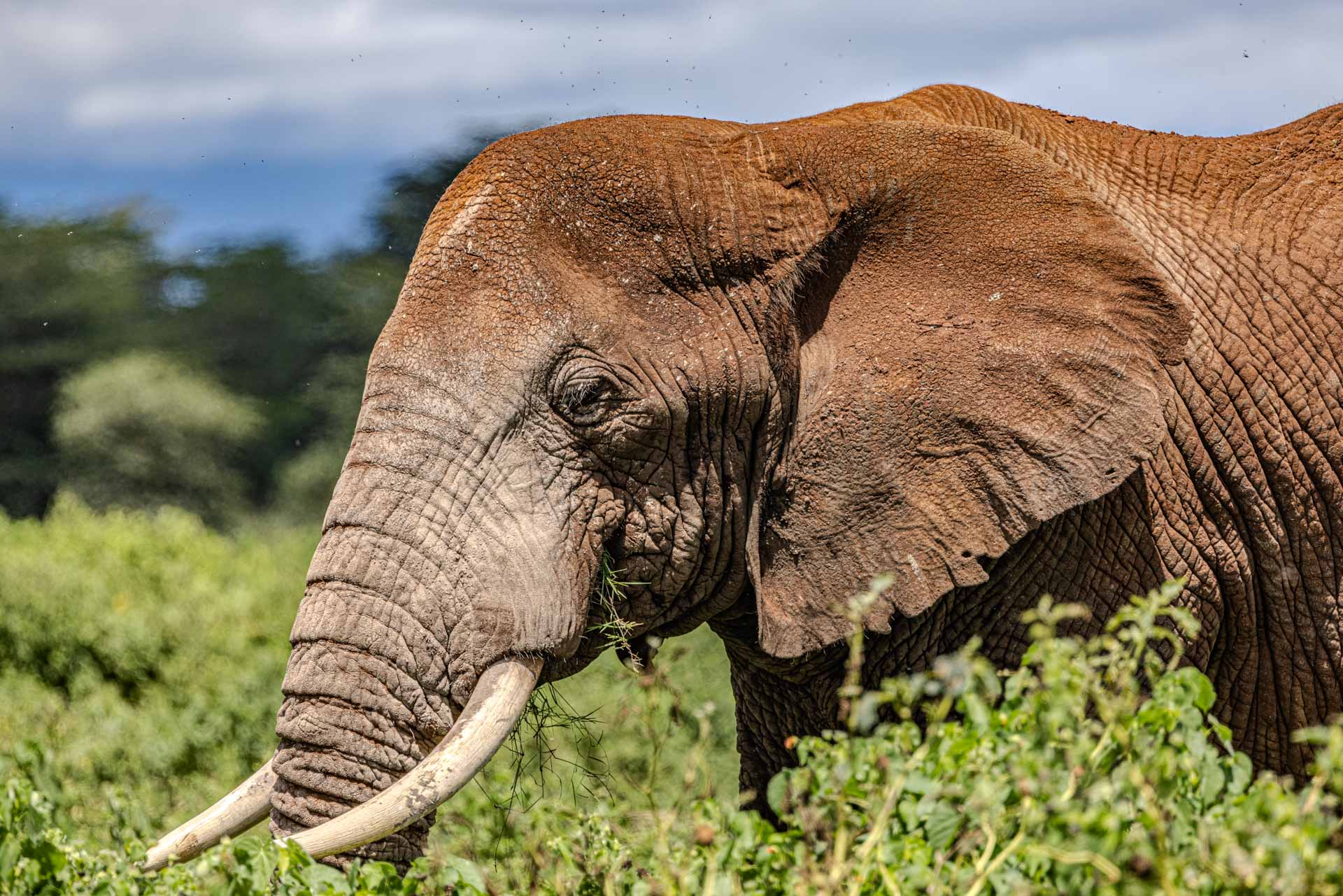
Despite being the only survivor of a litter of four, Risasi's young male cub is defying the odds and thriving on his own, spending his time around the Kichwa Tembo Airstrip where prey is abundant. Recently, Angama guest Shaf Miah, captured him tagging and then skilfully hunting an impala lamb. His ability to effortlessly tag the prey, allowing it to run before catching it again, showcases his prowess even at a young age.
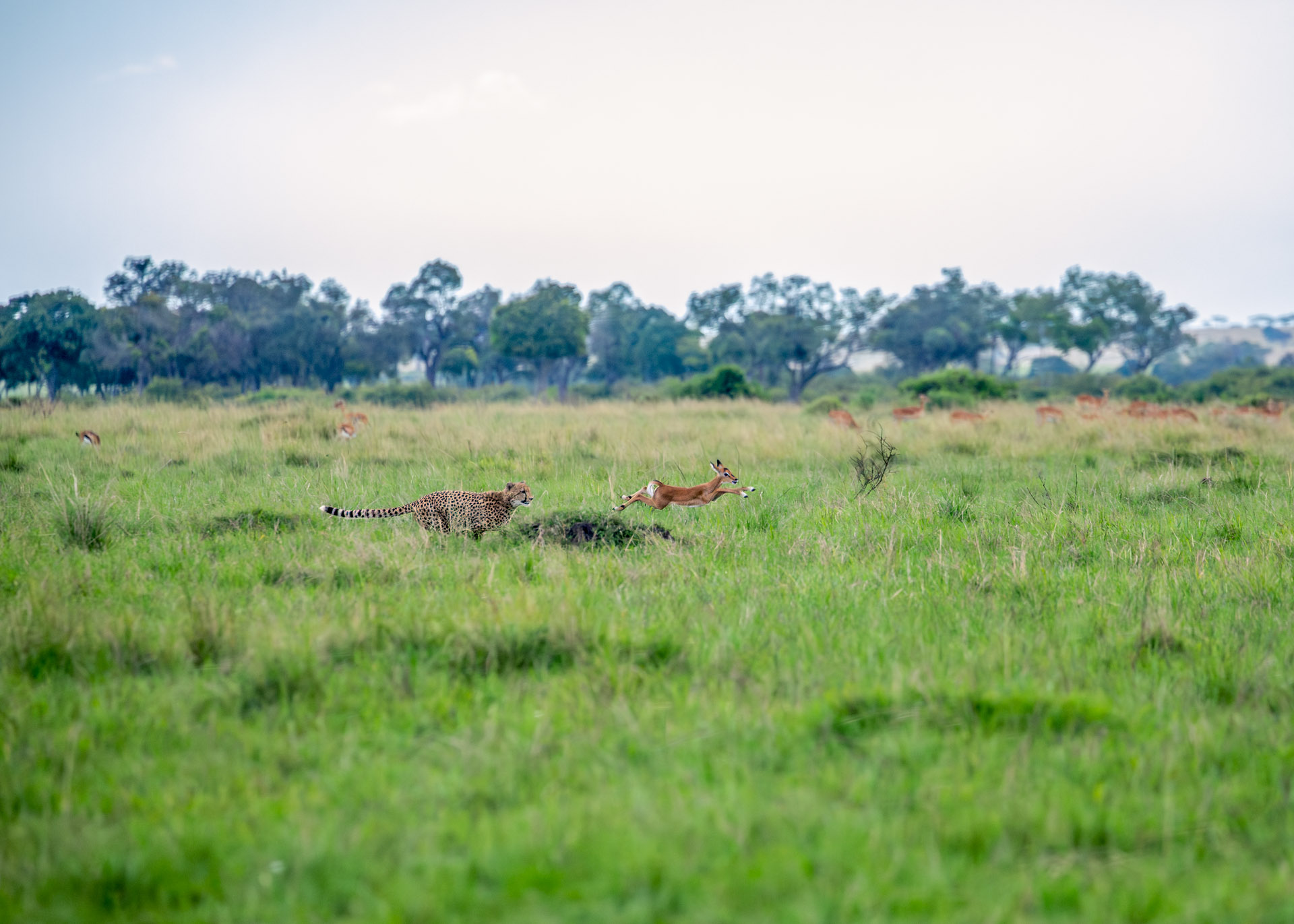
Observing him playfully toying with his prey before making the kill is a behaviour typical of young predators honing their hunting skills. Cheetahs, known for their incredible speed and agility, must get in lots of practice to refine their abilities to catch prey efficiently. With his adaptability, he stands a good chance of growing into a strong and successful adult cheetah, contributing to the conservation of his species.


As rain falls abundantly in the Triangle and herbivores enjoy the plentiful food source, new life emerges. Recently, we observed a few-week-old baby giraffe trailing closely behind its mother, a heartwarming sight to see as the graceful mother led the still-wobbly baby to a better grazing area.


Black-headed herons are opportunistic hunters and their diet typically consists of fish, frogs, small mammals, and sometimes insects. While herons have been observed catching and eating snakes on occasion, it's not a primary part of their diet. They are, however, known to be skilled hunters with sharp beaks and long necks, which can make them capable of catching and dispatching snakes relatively easily if the opportunity arises. Preferring smaller snakes that are within reach, they generally avoid large or more venomous species.

The rufous-naped lark is a species found only in Africa. Like many birds, it may exhibit territorial behaviour, particularly during breeding season. While territorial behaviour can vary among individuals and populations, male rufous-naped larks often use their powerful song to establish and defend their territory. They find a prominent perch on a shrub or other elevated spot (like a termite mound) within their territory and sing loudly to advertise their presence and deter intruders. They also adopt aggressive postures such as raising their crest, spreading their wings, or lowering their body towards the ground to intimidate intruders.

With very few left in the wild, the white-headed vulture is classified as 'endangered' by the International Union for Conservation of Nature (IUCN). Threats to its survival include habitat loss, poisoning from ingesting poisoned carcasses intended to kill predators, and persecution by humans due to superstitions or conflicts with livestock farming. Every now and then we see one or two in the Triangle, a welcome sign that there is still a population here — no matter how small.
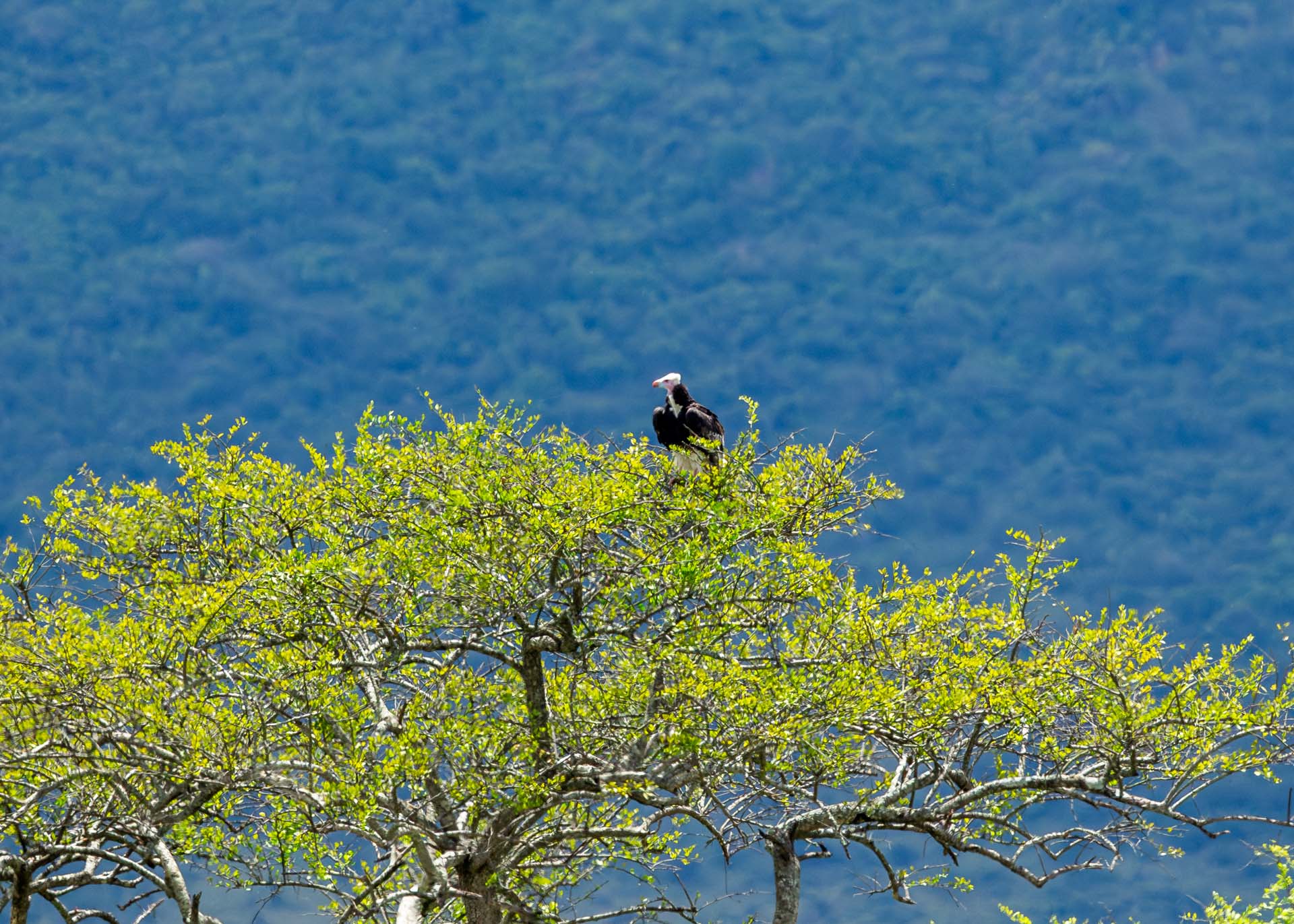
Renowned for their sharp vision and strategic aerial positions, eagles sometimes seize opportunities presented by unguarded kills. Recently, two tawny eagles were seen exploiting such a scenario, feasting on an unattended kill, likely left behind by a foolish leopard. -Robert Sayialel
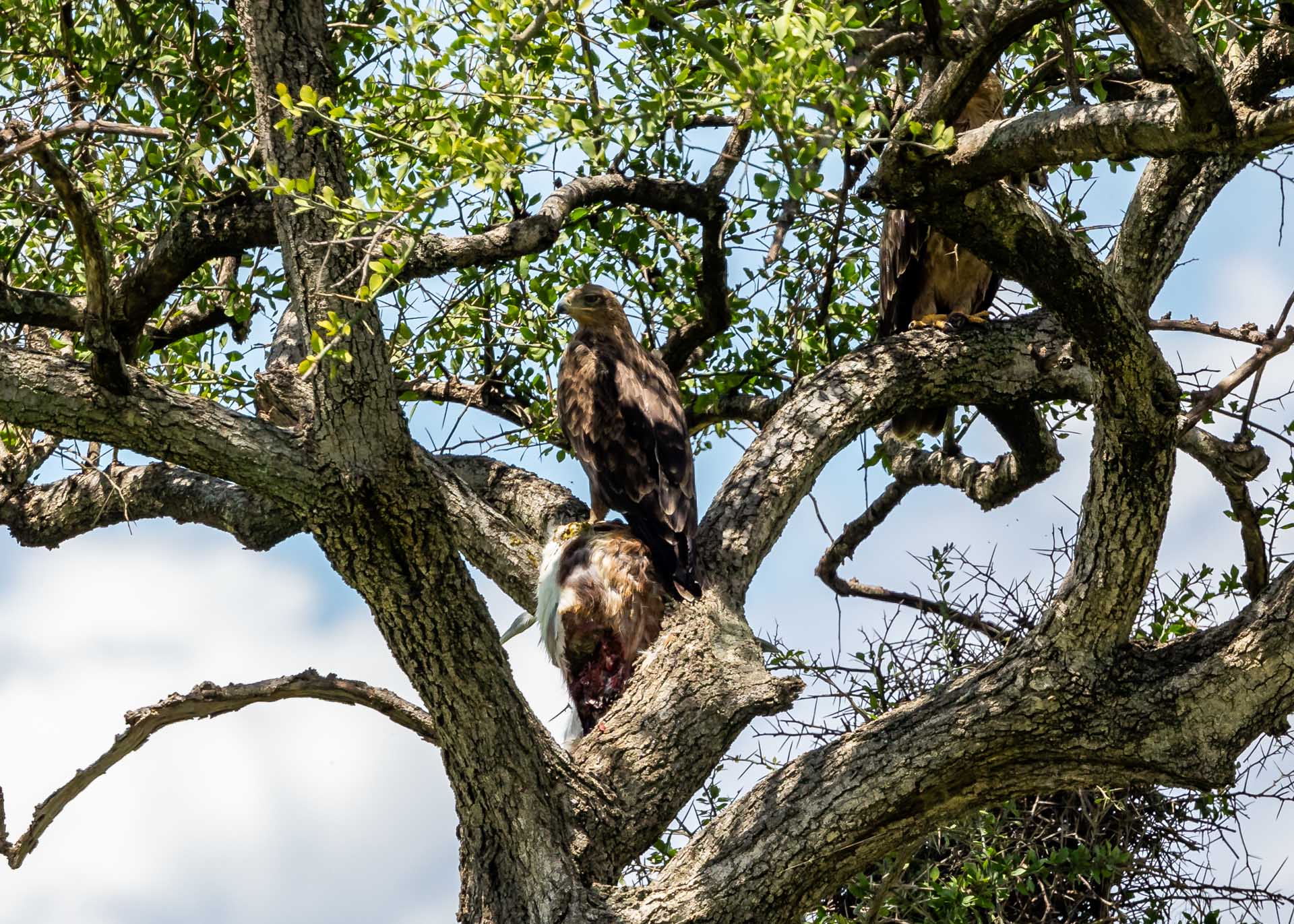
Filed under: This Week at Angama
Subscribe for Weekly Stories
Comments (0):

Angama Image Gallery